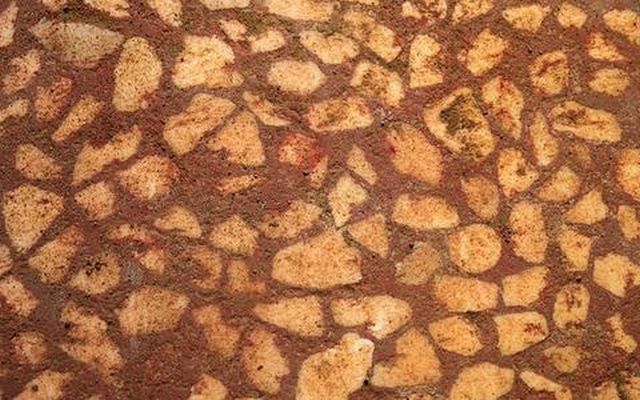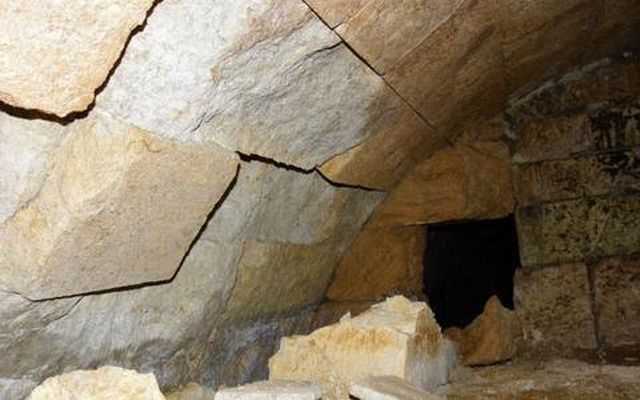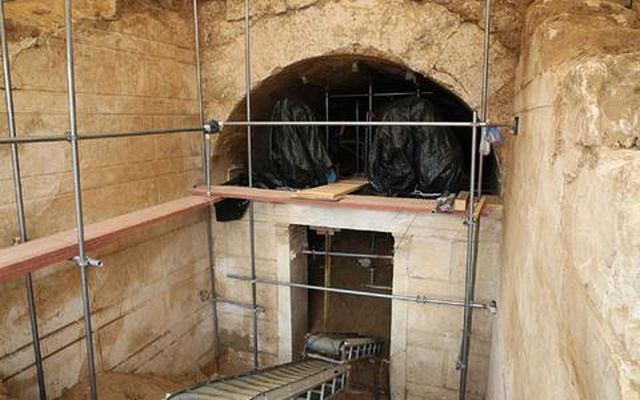Photo: ethnos.gr
Part of a marble floor consisting of small pieces of white marble with irregular shapes on a red background, at that preserved in a very good condition, has been uncovered during the archaeological excavations on the Kasta hill in Amphipolis.
The marble floor was uncovered in removing the soil from the antechamber of the tomb in the area behind the wall with the Sphinxes, and murals with traces of blue were found on the threshold of the first partition wall.

The announcement of the Ministry of Culture states that a small sandbar to the top of the arch has also been found in all three rooms behind the sealing wall of the tomb. The three rooms formed by the construction of the cross partitioned walls along the arch seem to have been buried under soil in the sealing of the tomb.

The walls partly served to support the embankments. The empty space at the outer sealing wall and the holes at the partitioned walls, probably left in the removal of stone blocks, seem to have been part of a plan to seal the tomb. The presence of three spaces along the arch is another typical feature of the monument uncovered by the archaeologists on the Kasta hill.

The Ministry of Culture also reports that the first partition wall after the entrance is uncovered only to the Ionian capital decorated with embossed rosettes. The top of the side support in the endmost eastern part of the capital has been uncovered too. It has been also established that the west part of the capital and the stone blocks lying on it are missing. "As we have already mentioned, probably there is an entrance at the partitioned wall, which leads to the second room of the tomb. The shape of the entrance will be uncovered after removing the soil in the next few days," states the announcement of the Ministry.
Technical activities
At the same time, the activities to complete the site infrastructure and to protect both the monument and the area from unexpected weather events continue at a fast pace. As stated by the Ministry, "to protect the monument from rain, the making of ditches for drainage of rainwater has been started around the monument in addition to the shed that is already completed." The removal of the sandbars required engineering and geotechnical study, as follows:
1. Full covering of the partition walls with wood.
2. The formation of "second floors" with heavy scaffolding, allowing reinforcement of the arch, creation of a suitable narthex, smooth transition from room to room and safe removal of soil.
3. A solid reinforcement of the second partitioning room to deal with the intense pressure from the soil in the next room.
4. External reinforcement of the entrance to strengthen the Sphinxes and secure the partition as well as construction of supporting elements that will eventually be needed in the excavation progresses.